 |
 |
| 北川民次アトリエと芸術家横丁 Studio of the late Mr. Tamiji Kitagawa and Side Alley of Artists' [Photos taken on May 4, 2002] |
| メキシコや瀬戸を愛し続けた洋画家・北川民次画伯(1894−1989年)の生前のアトリエ (瀬戸市安戸町)が年1回開放されます。2002年の今年は5月3日と4日の2日間公開 (午前10時〜午後3時)。アトリエは本山中学の北に面し、300mぐらい南には陶土採掘場 (別名瀬戸キャニオン)がある。 現在は空家で瀬戸市が管理。”北川民次のアトリエを守る会”が日常の保守に当たっている。 また、このアトリエの近くにある製陶所跡地を活用した新スポット”芸術家横丁”では春祭り を開催し、陶器廉売市などを繰り広げていた。小生はこの芸術家横丁に初めて入ったが、 普通のせともの店と商品構成が違い、繊細に絵付けされ壷、宝石入れ、コーヒーセット等が 主で、日常品というよりもインテリアに向いている感じがしました。陳列品は結構埃を被って いましたが、現物を見て値札と見比べても十分お値打ち感があるように思いました。 (下の写真に商品の一部を紹介) Studio in life of Artist of Western painting, Tamiji Kitagawa (1894 - 1989) who kept on loving Mexico and Seto is opened once a year. It was opened in May 3 and 4, 2002. It faces the north of Motoyama junior high school. There is China clay mining place (called as Seto Canyon) about 300 m south of it. This studio is vacant at present, and managed by Seto City and everyday's maintenance is carried out by Association of Protecting the Studio. New place of interest called 'Side Alley of Artists' using the site of a demolished pottery building is near the studio and spring festival is hold in this new place. hosting bargain sale of ceramics. I entered into this place for the frist time, and felt that main exhibits seem to be finely decorated pots, jewelry box , sets of coffee cups and saucers, suitable for the interior rather than for daily use. The exhibits are covered with dust a little, but seem to be valuable compared with the prices. (Parts of the exhibits are shown in photos below.) 民次の経歴: 民次の陶壁画: 市民の文化的財産: アトリエと芸術家横丁へのアクセス: 気になる事: |
| ダンプ街道東、マンション南に 面する東西に伸びる道路 Danpu Kaidou |
芸術家横丁 直販商品用等の建物 Side Alley of Artists Building for direct sale |
芸術家横丁 絵付け体験が出来る Side Alley of Artists Underglazing work can be experienced |
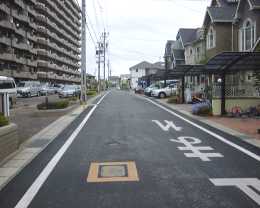 |
 |
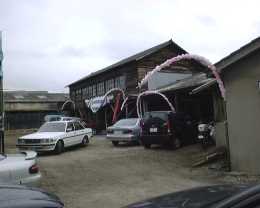 |
| 芸術家横丁ー直販商品 Side Alley of Artists Products for direct sale |
芸術家横丁ー直販商品 Side Alley of Artists Products for direct sale |
芸術家横丁ー直販商品 Side Alley of Artists Products for direct sale |
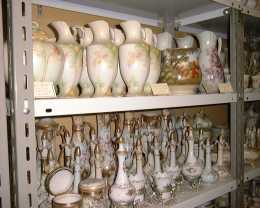 |
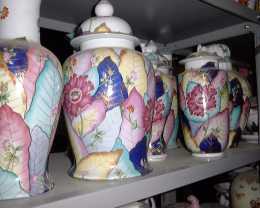 |
 |
| 芸術家横丁ー直販商品 (材料は水道の鉄管) Side Alley of Artists Products for direct sale (material is iron pipe for tap) |
住家とアトリエへの入口 Residence and entrance into Studio |
住家 Residence |
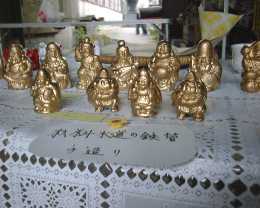 |
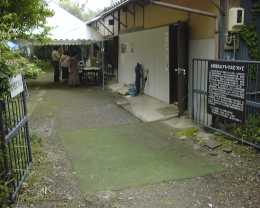 |
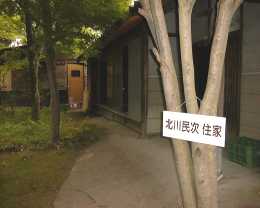 |
| アトリエ Tamiji's Studio |
民次本人の写真 Photo showing Tamiji |
絵付けされた陶板 Painting on pottery plate |
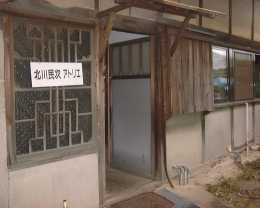 |
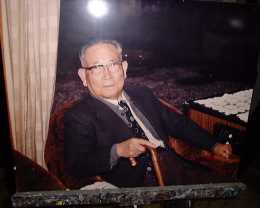 |
 |
| 絵付けされた大皿 Underglazed large plate |
1960年瀬戸風景 Seto Scenery in 1960 |
住家の裏 Rear of residence |
 |
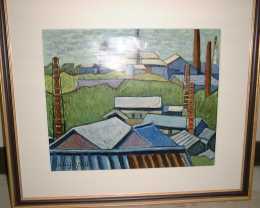 |
 |
| カゴメ本社ビル陶壁画 Wall painting at Kagome Head Office |
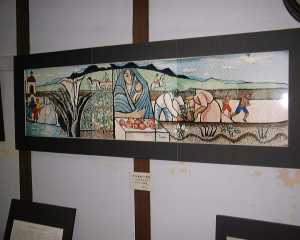 |
| 瀬戸を愛し続けた民次 ー都市公団中部支社の宅地分譲情報誌”かるがも宅地だよりVol.10”より抜粋ー 民次が瀬戸を描き続けたという魅力はどこにあるのか。 煙突が立ち並び、狭い路地に、坂道に、重なり合うように建つ民家や工場。そこには、忙しく 働く人々の生活の臭いが感じられた。 民次がメキシコに住んでいた頃のタスコの町に似ていたのかもしれない。タスコの町は労働者 の町であり銀鉱山の町でありどんな所にも家を建ててしまうタスコの人々の生活力と瀬戸の 人々の生活力に相通じる物があったのでしょう。 貧しさや労働に耐えながら”アスタマニャーニャ(明日があるさ)”と明るく働く人々のなかに、 民次は真の美しさと強さを見出したのでした。 ”旅の手帳から”という随筆に次のように書いています: 瀬戸周辺には”瀬戸へいかんでどこへいく”と謡われた童謡の一節があります。この童謡は Tamiji continuing to
love Seto: There is a stanza of nursery
song sung 'Is there any place other than Seto to visit?'
around |